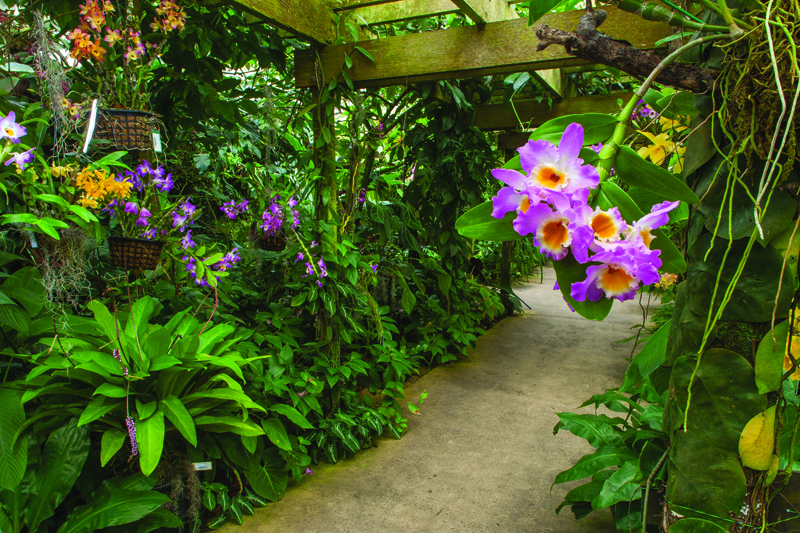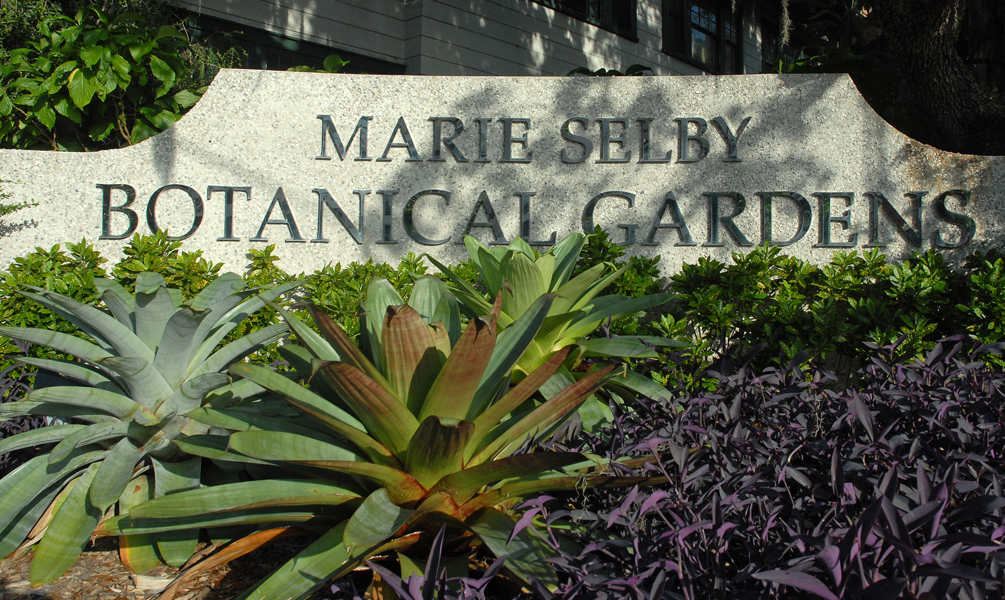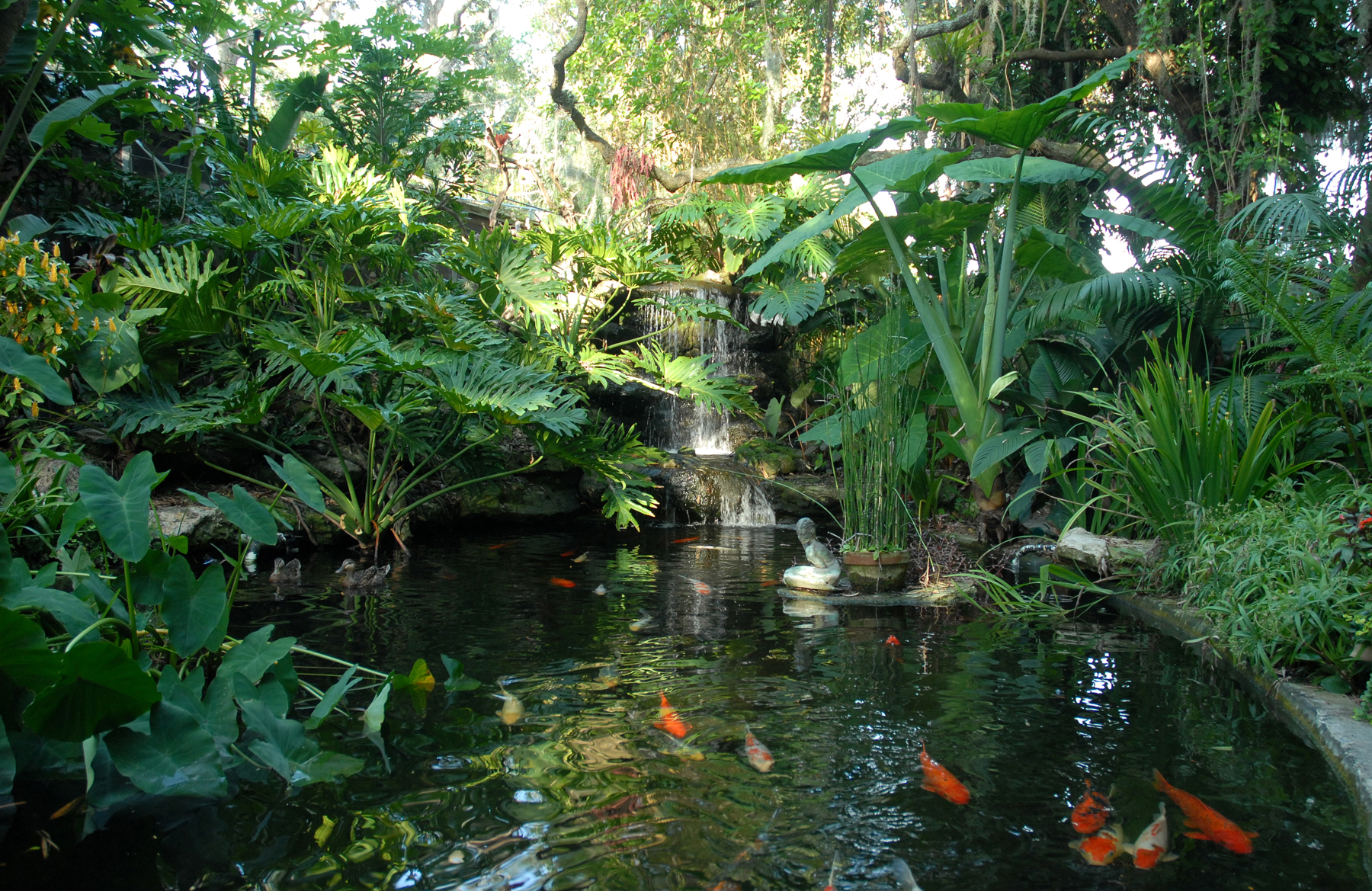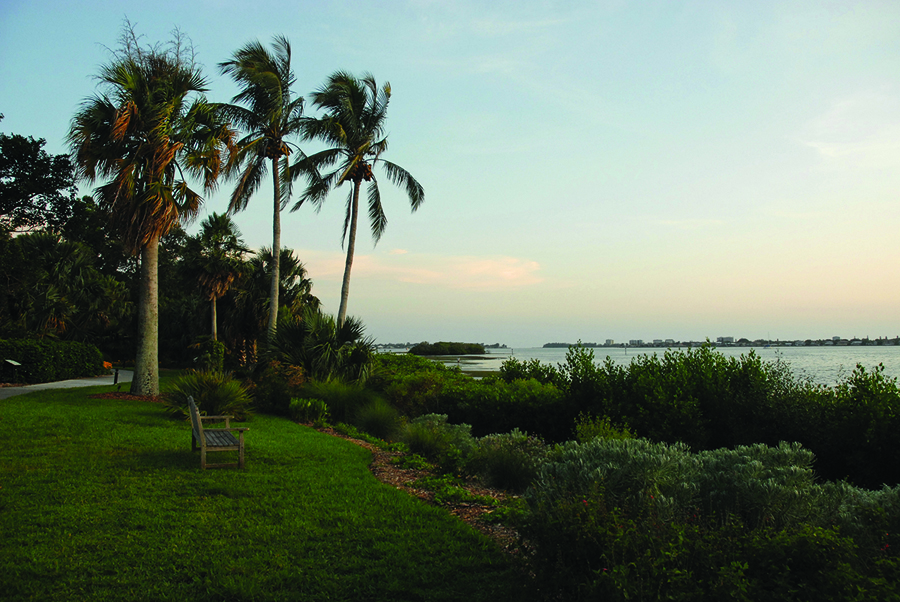By Stevie O. Daniels

Conservatory at Marie Selby Botanical Gardens
“A collection of plants is living art,” says Jennifer Ozdoba Rominiecki ’95, president and CEO of Marie Selby Botanical Gardens, Sarasota, Fla., a 15-acre urban, bayfront oasis showcasing rare and beautiful tropical plants.

Jennifer Rominiecki ’95. Credit: Dick Dickinson Photography
And art is something Rominiecki knows a thing or two about, having started her career as an assistant at the Solomon R. Guggenheim Museum. From there she moved into the world of performance art at the Metropolitan Opera, then to horticulture at The New York Botanical Garden where she rose to vice president for institutional advancement and led a $479 million campaign.
Although not a gardener, Rominiecki is passionate about the interdisciplinary connection between horticulture and art as well as the crucial role that botanical gardens serve in plant research and conservation.
Public gardens give us a chance to renew and reconnect with what makes us human.
Joining Selby in February as it prepares to celebrate 40 years of world leadership in the study and conservation of plants, she plans to increase the number of exhibitions to draw more visitors and shore up the infrastructure to ensure the long-term sustainability of the gardens.
“I am motivated by making a difference in the world,” says Rominiecki. “I have deep experience on both the programmatic and financial side which is necessary in the nonprofit world today. Caring about the mission is fundamental and then making it possible to secure the future is my passion.”
Selby, which opened in 1975, includes more than 20,000 greenhouse plants, plus thousands more in the outdoor gardens. The collection is focused on epiphytes—mostly tropical plants that grow in the tree canopy—such as orchids, bromeliads, and gesneriads. Some examples of gesneriads are African violets and gloxinia.
One of the eight greenhouses, the Tropical Conservatory, is open to the public year-round. The newest area is the Ann Goldstein Children’s Rainforest Garden with interactive stations to explore rainforest plants and habitats.
“The garden gives people a chance to renew themselves and reconnect with nature. It’s a place where children learn about the natural world,” says Rominiecki. “So many people have told me stories about how the garden has been a refuge during difficult times as well as a place to absorb beauty.” Motivated by making a difference in people’s lives, she adds, “My work supports the existence and continuance of this place for my own children and the children of others.”
An art history honors graduate, she looks forward to creating exhibitions that link horticulture, art, and conservation. An experience related to her thesis on Robert Rauschenberg continues to inspire her. “Amazingly, I happened to be at the Guggenheim when the retrospective exhibit of his

Tag by Robert Rauschenberg
work was mounted. I was able to purchase number four of the 500-limited-edition print Tag that he created for the museum. It is my most prized possession.”
She notes that her thesis adviser, Robert Mattison, Metzgar Professor of Art, cultivated her passion for art. “His impact continues today as I lead an organization that protects and promotes a collection of living art.”





